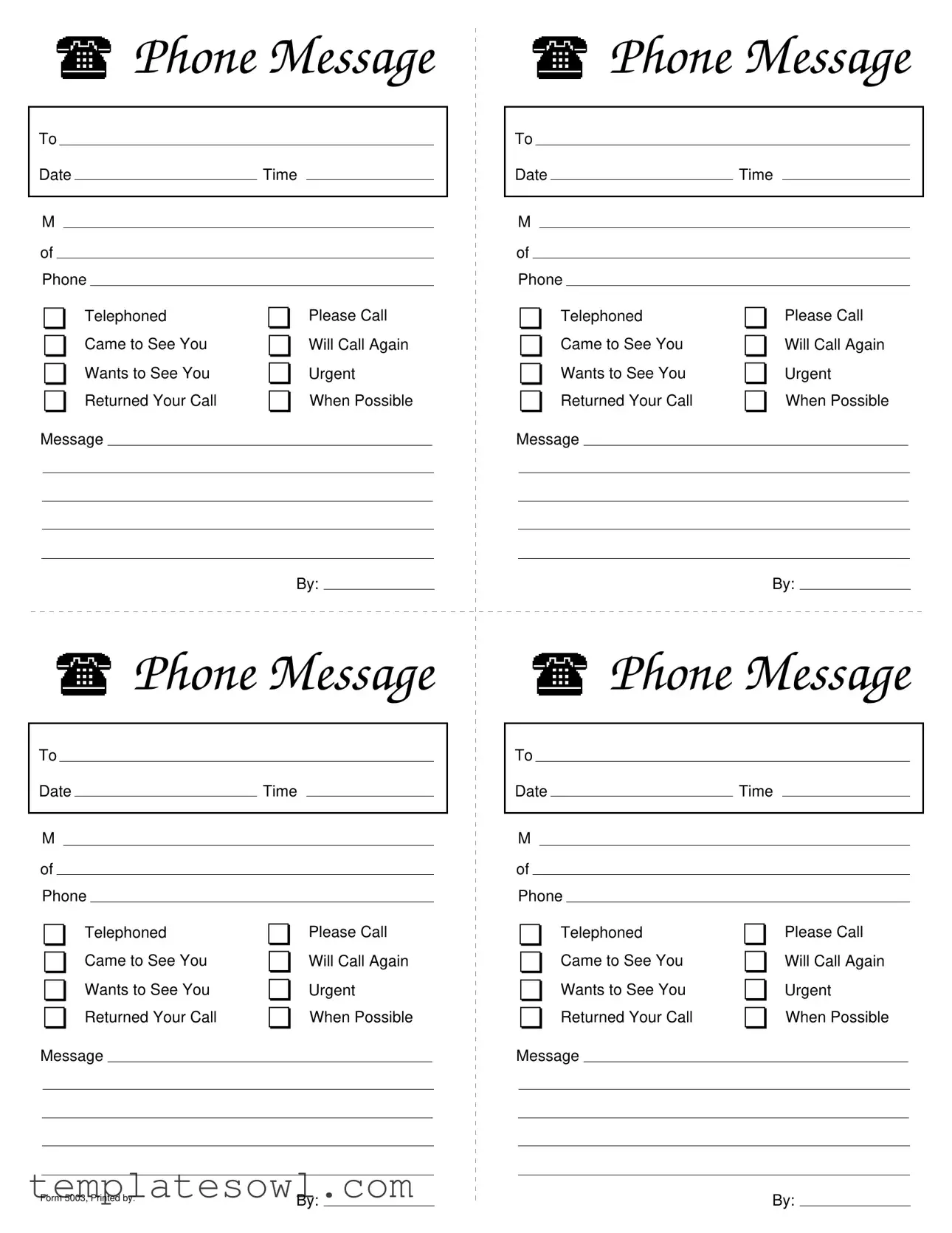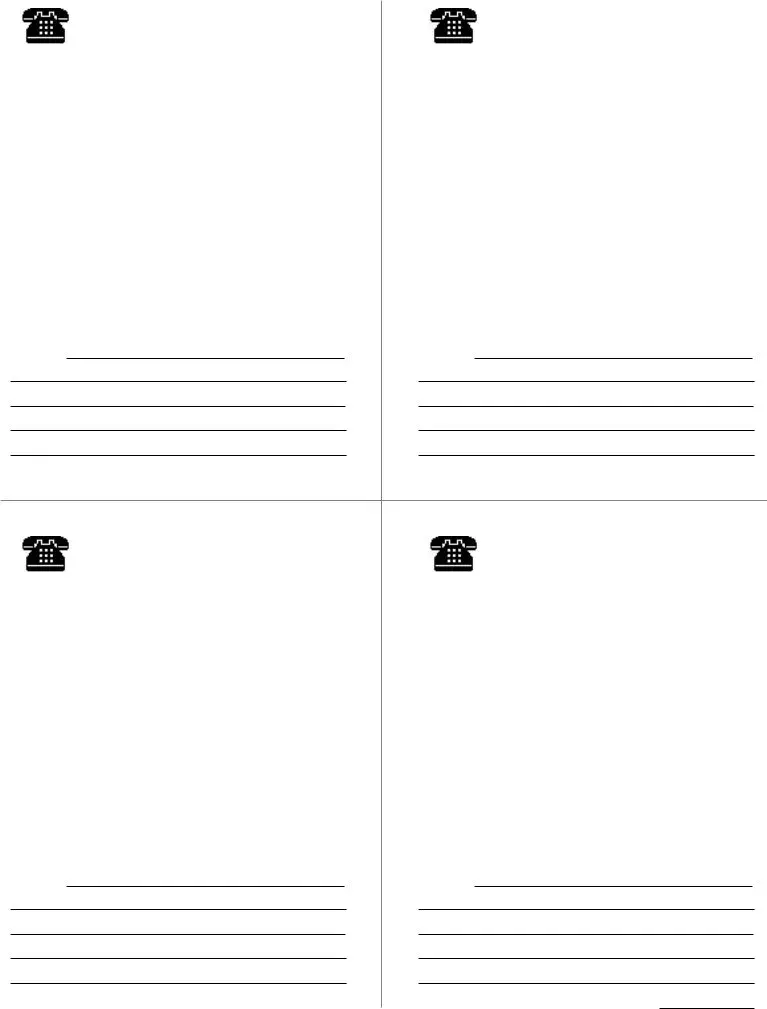What is the purpose of the Phone Message Slips form?
The Phone Message Slips form is designed to record important information regarding phone calls and visits. It helps keep track of messages from clients, colleagues, or any other contacts. By using this form, you can ensure that no important call or visit goes undocumented.
What information is included on the Phone Message Slips form?
The form includes fields to fill in the name of the person receiving the message, the date and time of the call or visit, and the method of contact. Various options are available to indicate the nature of the contact, such as whether the caller wants to see you, if the call was returned, or if it is urgent. There is also space for writing a message.
How do I fill out the Phone Message Slips form?
To fill out the form, start by entering the recipient's name at the top. Next, write the date and time of the call or visit, and check the appropriate box to indicate how the message was received. Write down the message clearly in the designated area. Finally, ensure that your name is printed at the bottom to indicate who completed the slip.
Can I use the form for both phone calls and in-person visits?
Yes, the Phone Message Slips form is versatile and can be used for both phone calls and in-person visits. It has checkboxes that allow you to specify whether the message was received via phone or if the individual came to see you, which helps track different types of communications.
What should I do if the caller requests urgent action?
If the caller indicates that the message is urgent, it is important to prioritize it. Check the "Urgent" box on the form. Make sure to notify the intended recipient as soon as possible, either by passing along the message directly or by highlighting it in your notes.
How many copies of the Phone Message Slips form should I keep?
It is best practice to keep at least one copy of the Phone Message Slips form for your records. Depending on your office policy, you may need to distribute copies to the person the message is intended for, as well as any other relevant parties. Keeping a record allows for easy reference in the future.

